Why Is My Dog Biting His Nails: Uncovering The Reasons And Finding Solutions


As a pet parent, you might have noticed that your pup is nibbling its nails more than a few times. At first, you might not think much about it, but after seeing the same thing a few times, it will strike you: Why does my dog bite his nails?
This is when you start researching whether dog biting nails is a common occurrence or is not something to be taken lightly. And that is when you will stumble upon us to understand the reason behind dogs biting nails.
So, sit tightly without becoming too stressed about it, and let’s discuss the reasons your dog is biting its nails.
Why Do Dogs Bite Their Nails?
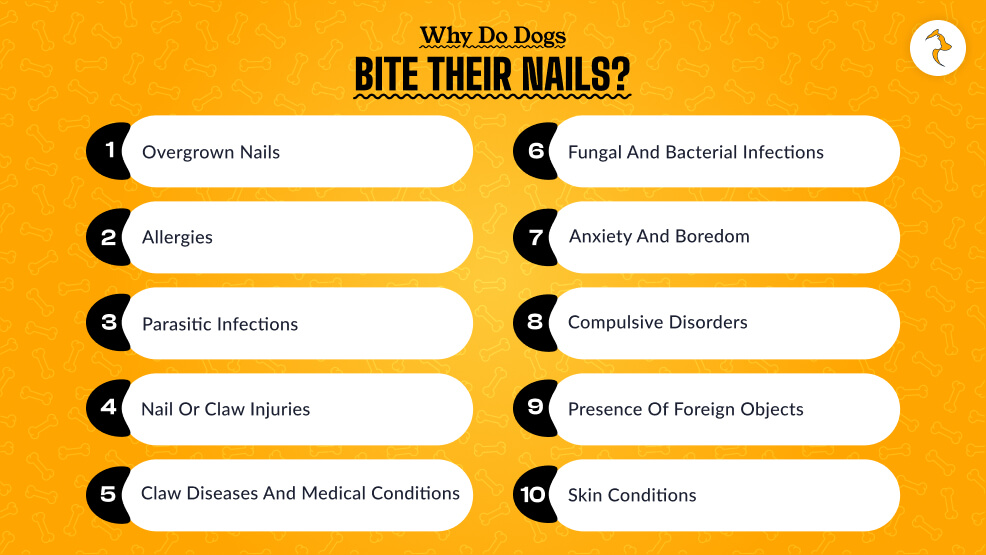
Most nail-chewing behavior exhibited by dogs consists mostly of an ugly habit. It is usually a sign of discomfort or pain and is an indication of anxiety. Here are the top ten reasons your dog chews on his nails:
1. Overgrown Nails
Overgrown nails can cause pain; the pet will gnaw at them mostly because it is uncomfortable. The nail could be painfully digging into the pad, closing up around the nail, or snag and torn on an object. The dog tries to remedy the situation by chewing but to no avail.
Overgrown nails put pressure on the paw pads, which can cause your pup to feel discomfort. In certain severe cases, the nail can even curl up and dig deep into your pup’s skin, causing immense pain.
Regular or even weekly trimming of their long nails can drastically reduce the discomfort, and in turn, your dog will stop biting its nails.
2. Allergies
Food and environmental allergies make dogs itchy, so they develop itchy paws and skin. Itchy paws may extend to the side of nails, so a dog perpetually licks or chews at its paws to comfort itself.
- Your pup could be allergic to certain environmental factors, such as dust, grass, or the very common allergen pollen.
- Food allergies are also culprits that cause itchiness around the nails of your dog’s paws, making them bite or, in severe cases, rip the entire nail off.
- Another very common allergy that causes dogs to bite their nails is a condition known as atopic dermatitis. It affects the entirety of your pup’s body, including the paws, making them itchy and painful.
If you see signs of allergies in your dog, such as redness or swollen paws that make it constantly bite and chew, you should immediately consult your vet.
3. Parasitic Infections
With extreme irritation to nail beds and feet, these beasts of burden, ticks, fleas, and mites turn the lives of dog’s upside down.
With mange mites, dogs get irritated to the point of unreasonable scratching and onward chewing on paws or nails almost indefinitely!
Fleas can cause a painful condition called flea dermatitis, which causes itchy skin and redness. This makes your dog scratch and bite all over their body, including the nails. So, to get proper help with this disease, take your dog to the vet.
4. Nail Or Claw Injuries
With a broken, torn, or injured nail, tooth-and-nail is considered extremely painful. Chewing interferes with pain signals or distracts the dog by pulling some of the nails under some pain relief whenever their chewing works.
While your dog is playing, small accidents can happen, like digging or snagging its nail on the carpet, which can result in nail injury.
At first, you may not have noticed this and ask yourself, “Why is my dog biting his nails?” Well, the answer is that he is in pain and, in a way, self-medicating.
If the pain is minor, it will go away in a few days, but if you see your dog physically limping or showing clear signs of discomfort, you must take him to the vet.
5. Claw Diseases And Medical Conditions
Certain nail-related conditions make the common dog sick: symmetrical lupoid onychodystrophy (SLO). This autoimmune condition results in sore, brittle claws, which the dog licks or chews nonstop.
In addition, systematic conditions like diabetes, hypothyroidism, and even vasculitis can cause certain anil problems.
If you suspect any of these conditions, it is better to take him to the vet and get a proper diagnosis before the treatment starts.
6. Fungal And Bacterial Infections
Infection of the nail bed by bacteria or fungus produces coloration, swelling, oozing, and smelly odors. The dog will lick the area to relieve discomfort or itching.
Fungal infections affect one or two nails, leading to a rough, sandpaper-like condition or a nail that looks abnormally soft. On the other hand, bacterial infections can lead to fractured, oozing, and ever-swollen claws.
7. Anxiety And Boredom
Cognitive issues such as separation anxiety in your dog or lack of stimulation may cause self-soothing behaviors like chewing nails.
This is most likely a conditional behavior performing when some exercise or concentration release would alleviate tension.
At the same time, boredom can also lead to your dog biting its nails. This is because it is not getting enough mental and physical stimulation, so dog biting nails is a way of keeping it engaged.
So, to curb your dog’s biting behavior, try to keep it engaged with certain toys or other mental stimulations. But if this anxiety is getting out of hand, consult a vet. They might prescribe behavior modification training or certain anxiety medications.
8. Compulsive Disorders
Nail biting may sometimes come very close to being an obsession in terms of OCD in a human. On such occasions, compulsive behavior cannot usually be linked to any physical cause, according to the attending veterinarian.
If you suspect such compulsive behavior, the best course of action is to seek professional help. A certified animal behaviorist can provide the necessary guidance and treatment for your dog.
9. Presence Of Foreign Objects
Sometimes, splinters, thorns, or even tiny bits of debris get stuck into a dog’s nail or paw. They hurt and irritate the dog, so it excessively chews the nail.
To avoid such problems, it is best to check your dog’s paws properly and clean them after every outing so that nothing is stuck in them that is hurting them. This will also help you stop your dog’s biting habit.
10. Skin Conditions
Any skin disease typically causes inflammation, redness, scabs, and itchy paws and nails due to dermatitis, eczema, or a yeast infection. Chewing and biting become pain-relieving mechanisms.
If you suspect your dog has any of these skin conditions, immediately take him to the vet for a proper examination. Then, proper treatment for such conditions can start.
How Do I Get My Dog To Stop Chewing Their Nails?

The first step in stopping this chewing is to study your dog’s chewing habits. Seven practical ways to prevent such a habit and develop something better are as follows:
1. Identify The Cause
The first thing to do is figure out what makes it chew its nails. Watch for when it happens and see whether other symptoms, such as limping, redness, or hair loss, occur at the same time. Have your veterinarian check for any physical condition, infection, or allergic reaction.
2. Provide Distraction
If it is due to boredom or stress, get your dog some more exercise in the form of extra walks, playtime, or puzzle toys so that your dog is tired and unable to focus on nail chewing.
3. Trim Nails Regularly
If you provide constant daily maintenance of your dog’s nails, there is no way for them to overgrow and chew away at it. Trim nails precisely with a good set of dog nail clippers or simultaneously maintain them with a professional groomer to keep an appropriate nail length. Never cut the quick, as this will result in pain and bleeding.
4. Use Anti-Chew Sprays
You would find quite a few types of anti-chewing sprays made to cause your dog’s mouth to have a bitter taste, which makes them avoid chewing their paws and nails. Ensure you read the label and make sure they are safe.
5. Train And Rewar
To avoid nail chewing, use positive reinforcement training techniques. Replace what the dog is chewing on with a command or a toy and reward good behavior. Consistency is the best deterrent to this habit.
6. Anxiety Relief
Calming products, such as pheromone diffusers, anxiety wraps, or calming chews, benefit anxious dogs. Severe cases may require the intervention of a veterinarian, who may prescribe medication and behavior modification.
7. Seek Professional Help
If your efforts to save your dog from nail chewing are being met with stubborn resistance, call a behavior therapist or veterinarian. There may be some kind of internal organ disease or behavioral disorder requiring technical intervention.
Signs It’s Time For A Vet Visit
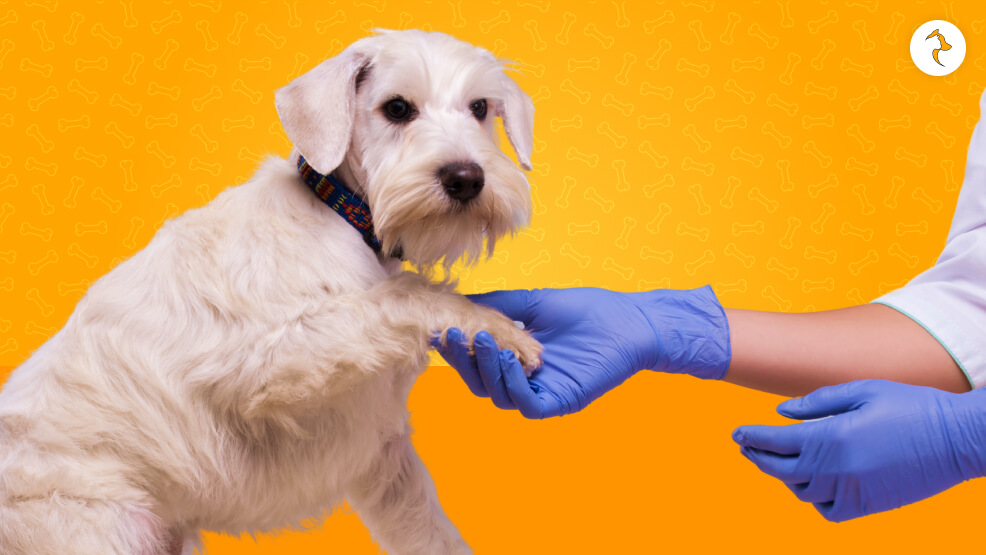
When it comes to the health of your furry babies, it is always better to be safe than sorry. If you are seeing these signs then it is time to go to the vet,
- Swollen Paws
- Excessive paw licking
- Limping or change in their gait
Taking The Next Step!
Dog biting nails of all sizes indicate something. Be it physical pain, heartache, or a behavioral disorder, the issue needs to be recognized and solved as soon as possible.
Therefore, with proper care, nursing, and training via your vet, you will have a happy, healthy, and very comfortable dog.
Do Remember: Although dogs tend to show some nervous habits, like nail-biting, characterization-wise, they are supposedly to be highly reactive. An early intervention might prevent these pathogens from progressing into their complicated form.
Additional Reading:

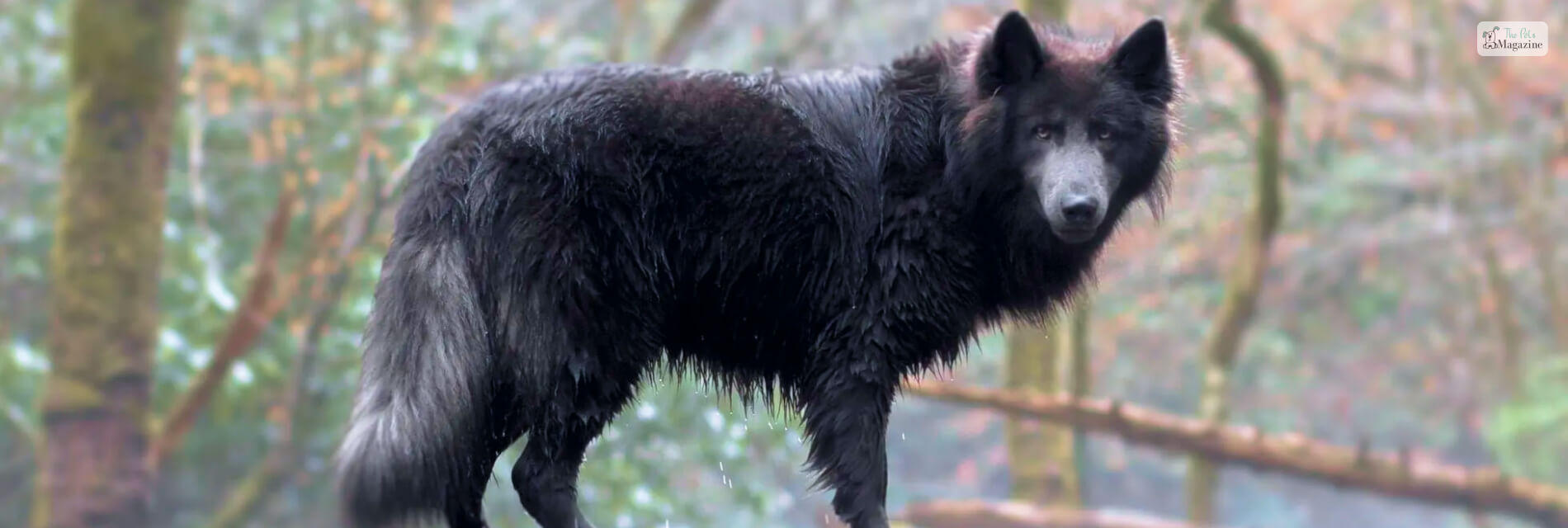


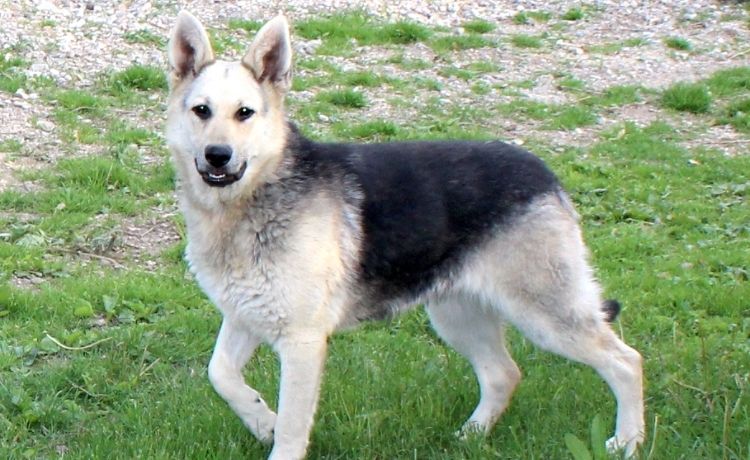

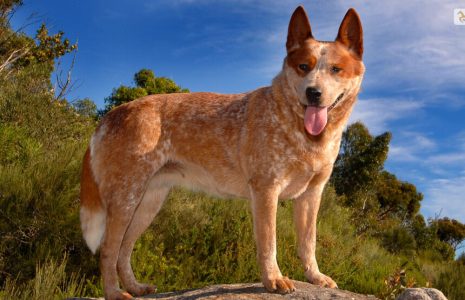


Leave A Comment